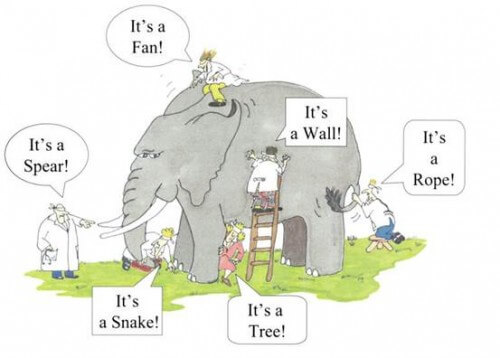Last week David Hockaday, posted an excellent blog on the concept of “humanitarian interoperability”, a new buzzword at the UN which is likely to grow in momentum over the coming 12 months. He describes how interoperability is a term that has previously been used in the context of Nato command structures, plug sockets and even migrating birds.
Essentially, interoperability is described as a way of working that (in the Nato context) allows separate command and control structures to operate whilst allowing for compatibility. Applied to the humanitarian context, it could potentially allow for greater pluralism and diversity in humanitarian approaches whilst ensuring that complementary efforts ‘dock’ with each other.
Whilst I’m not usually the first in line to cheerlead new humanitarian buzzwords, this concept feels strikingly relevant to the challenges facing NGOs in the area of crisis anticipation.
Due to the recent failures of the humanitarian system in the Ebola crisis, anticipation and early response are at the forefront of many peoples’ minds. There is renewed interest in a humanitarian system which can identify the likelihood of a deteriorating situation early on, and implement the actions required to avert it from developing into a full-blown crisis. Our NGO members, with large grassroots networks of staff and partners on the ground in the communities where crises are developing, have an important role to play in this.
As one donor said to us ‘it was MSF who first alerted us to the fact that the Ebola situation is out of control. Because they are an NGO, at the time they were ignored’. There is a desire to correct this, and to create the channels for NGOs to play a more substantial role in enabling an anticipatory model of action.
Over the past few months I have been doing a scoping of anticipation resources in Start Network member agencies and potential external partners. The end objective is to support agencies with tools and resources to move towards a model of humanitarian action that responds to changes in risk in a timely way, rather than responding to events after they have already escalated.
What is clear is that the picture in this area is currently a patchwork of diverse initiatives, focussed on specific hazards, targeted countries or restricted audiences. One particular UN agency that I visited spends an estimated £20million a year on risk monitoring activities across tens of departments. The scientific capability and potential is vast, but most of this is aimed at governments or internally, and is not easily accessible to NGOs or the affected communities themselves.
Internally, our agencies are also investing in exciting anticipation initiatives such as analysing and modelling the impact of food security on households, index-linked forecasting and detailed conflict analysis. However, the initiative is again often limited to just a handful of countries, or the audience is internal to that agency. We have a problem of interoperability.
Today’s humanitarian problems are bigger than any one agency. There is no point in one agency alone being ‘anticipatory’ as the crisis in question cannot be averted by one agency acting alone. In addition, initiatives focussed narrowly on just one country also have their limitations. In the event of a new crisis, much of the surge resourcing (financing, staff, logistics) flows into the country from external actors. Therefore, whilst early warning initiatives should be locally specific and nationally led, to translate into the surge resourcing required to prevent crises in an anticipatory way, these also need to be interoperable with global resource mobilisation mechanisms.
One example of an existing attempt at interoperability in this field is the IASC Early Warning Early Action group. This group of (mainly UN) agencies, collaborate to produce bi-annual Early Warning briefing notes. The briefing notes are primarily aimed at the IASC Emergency Directors Group and the CERF secretariat to influence the triggering of resources for early action. Intensive work by the group has facilitated a process by which each of these very individual UN agencies are able to align around a common process by which to identify risks, and use this to collectively attempt to trigger resources for early action. This process is not perfect but demonstrates the possibilities.
The Start Network could be an ideal testing ground for a greater degree of interoperability between its NGO members, and with external partners in the field of anticipation. We have a global pooled fund, the Start Fund, with a mandate to release early funds in response to emerging crises. We are also exploring further financial mechanisms (loan facility, insurance mechanisms, Cat bonds) to enable timely response. In order to function effectively, these mechanisms will need to be fed by the diverse early warning and risk information being collected individually by the NGO members and external partners. This will require a high degree of interoperability.
The technical questions that the Network will have to collectively work through include: What is a risk to us? What do we want to be warned about? How will we define the base unit of need? What constitutes ‘evidence’? There is likely to be a lot of diversity amongst the individual technical specialisms of our member agencies. However, at some point, the end analysis will need alignment to generate comparable evidence at a global level and leverage the collective resources of the network to act early.
The Start Network is holding a first Early Warning Early Action forum for member agencies on the 14th January. Please get in touch if you would like to be involved in this or other anticipation initiatives!
Email: E.montier@savethechildren.org.uk Twitter: @emilymontier

